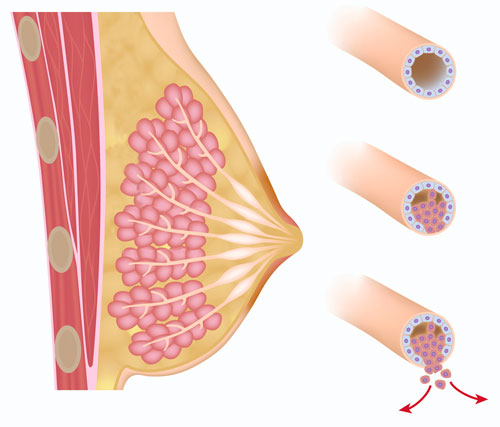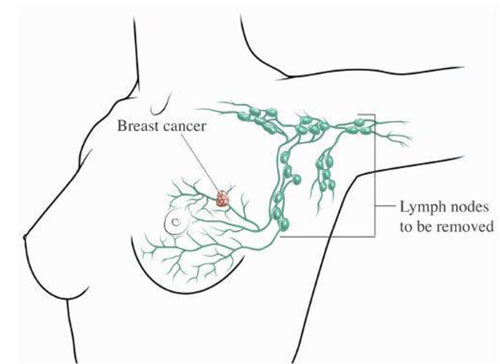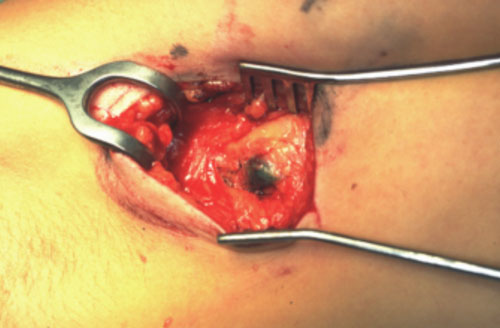Breast cancer is the most common cancer amongst women all over the world. In Singapore, it affects 1 in 12 women. Fortunately, it is a highly curable disease and treatment methods and technology have drastically improved over the years.
How does Breast Cancer Develop?

- In a normal breast, the duct of the breast has only one regular layer of cells, when seen in magnification from a cross-sectional perspective.
- Cancer is the irregular and disorderly growth of cells. When breast cancer first develops, the number of cells lining the duct increases significantly.
- In the earliest precancerous stage, these additional cells still remain within the duct, and has not penetrated through the lining. This stage is called Ductal Carcinoma in Situ (DCIS), Stage 0. In this early form, it has no potential of spreading to other organs.
- If left alone, these abnormal cells will continue to grow and will subsequently invade through the duct. This is now called Invasive Ductal Carcinoma (IDC), and being a true breast cancer, it has the potential to spread to other organs.
How does Breast Cancer Spread?
Apart from our arteries and veins, our lymphatic system provides an additional pathway for fluid to move within the body. Arteries carry blood (including fluid) away from the heart to all organs in the body, while the veins and lymphatics bring fluid back to the heart.
The lymphatic system also plays another important role, providing an immune defense against foreign bodies, like bacteria and viruses, and abnormal cells such as cancer. It has special checkpoints all over the lymphatic system, known as lymph nodes, which act as the main bodyguard and filtration system for all foreign bodies.
Breast cancer usually spreads in an organised manner. It commonly starts to spread through the lymphatic system to the lymph nodes in the armpit (axilla) area before spreading to other organs.
The Role of Lymph Node Surgery in Breast Cancer
-

Location of the axillary lymph nodes i. Who is it for?
As breast cancer will first spread to the axillary lymph nodes, these lymph nodes will need to be sampled, and sometimes completely removed for breast cancer staging and cancer control. Thus, all patients who have invasive breast cancer will need the axillary lymph nodes to be sampled, and sometimes completely removed. Patients who have the precursor to invasive cancer i.e. DCIS, do not need any axillary lymph node sampling. - ii. Reducing the complications from lymph node surgery
In the past, patients who had their axillary lymph nodes removed sometimes had a complication called lymphoedema, which occurs in 20% of the patients. This is where the arm swells up, sometimes permanently.
However, medical and surgical advancements have helped refine the axillary lymph node surgery procedure to prevent lymphoedema. Nowadays, just a few selected special lymph nodes (known as sentinel nodes) are initially removed during surgery. Only if these sentinel nodes have cancer in them, will all the axillary lymph nodes need to be removed. -

Sentinel Node (dyed blue) iii. Understanding Sentinel Node Biopsy
To find these sentinel lymph nodes, the breast surgeon injects a blue dye and sometimes a radiocolloid just before surgery. Once identified, these sentinel nodes are sent for immediate testing(frozen section).If there is no cancer in these lymph nodes, the other lymph nodes do not need to be removed. If the sentinel nodes have cancer in them, then there is no option but to remove all the lymph nodes in the axilla.As blue dye is injected, the patient may look a bit blue, for a couple of days. Also, as the blue dye is removed through the kidneys, the patient’s urine may seem a bit green for a few days. This is completely normal and is no cause for alarm. - iv. Significance of Positive Lymph Nodes
If the lymph nodes removed during surgery are positive(have cancer in them), it usually means that the stage of the cancer is more advanced than if the lymph nodes were negative. Thus, it usually also means that there will be a need for radiotherapy and chemotherapy in addition to surgery.


